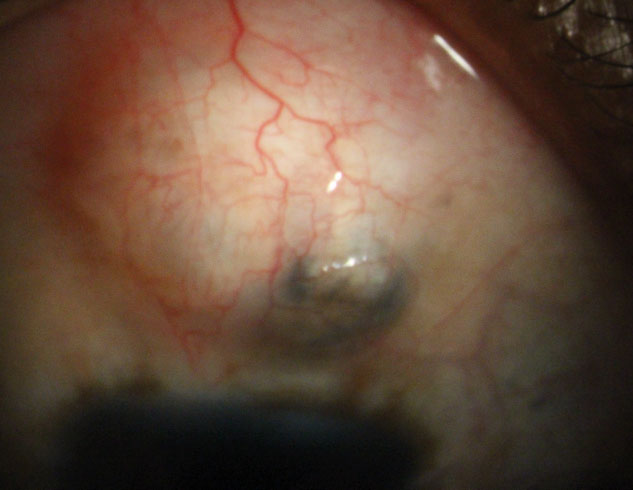 |
|
Over a lifetime, trabeculectomy surgery is likely more cost-effective in advanced glaucoma than medical treatment. Photo: Justin Schweitzer, OD. Click image to enlarge. |
While management of the lifelong condition glaucoma has been studied in terms of economic evaluation previously, such research tends to mostly emphasize earlier stages. Longer-term impact of surgery vs. medication for primary open-angle glaucoma (POAG) patients in the advanced stage is currently lacking evidence. As such, the authors of a recent study published in British Journal of Ophthalmology compared medical treatment to trabeculectomy in this subsection of patients using an economic evaluation decision model.
The model compared both options for management of advanced POAG in terms of costs and quality-adjusted life-years (QALYs). The main outcomes of the model presented in terms of incremental costs and QALYs, based on responses to three different metrics, called the EuroQol Five Dimension with 5 Levels (EQ-5D-5L), the Health Utilities Index-3 and the Glaucoma Utility Index. In the base-case analysis, using lifetime horizon and EQ-5D-5L measure, those receiving trabeculectomy had an average additional cost of £2,687, an additional 0.28 QALYs and an incremental cost per QALY of £9,679 compared with medical treatment. When society was willing to pay £20,000 for a QALY, there was a 73% likelihood of trabeculectomy being considered cost-effective. The incremental cost per QALY gained from trabeculectomy for a two-year time horizon when compared with medical treatment was higher at £47,663.
Essentially, the authors break down that their findings indicate “in patients presenting with advanced POAG, trabeculectomy has a higher probability of being cost-effective over a patient’s lifetime compared with medical treatment” in terms of QALYs gained. They add that “although the initial costs (cost of year-one treatment) are higher for patients assigned to trabeculectomy, these are partly offset in the longer term as these patients receive fewer subsequent procedures and have lower medication use.”
Although other economic evaluations have been conducted, almost all were on early glaucoma patients, with only one study considering more severe cases. In this comparable study, the researchers used a model to identify the most cost-effective treatment strategy for advanced glaucoma, yielding similar results to the present study. Analogously, they reported medical treatment being cost-inefficient over a lifetime horizon.
However, the current study’s model was more sophisticated, since each eye was considered independently and data came from a head-to-head trial-based comparison of trabeculectomy with medical treatment. What’s more, the data collected for this study was done so prospectively as part of a planned analyses in a pragmatic trial, rather than a hypothetical glaucoma population.
When looking forward, the authors suggest that “longer-term follow-up trial studies (i.e., 10 years) are required to collate the impact of interventions in the real world.”
Shabaninejad H, Homer T, Kernohan A, et al. Is primary trabeculectomy cost-effective for patients with advanced primary open angle glaucoma? Results from the Treatment of Advanced Glaucoma Study economic model. Br J Ophthalmol. February 9, 2024. [Epub ahead of print]. |

